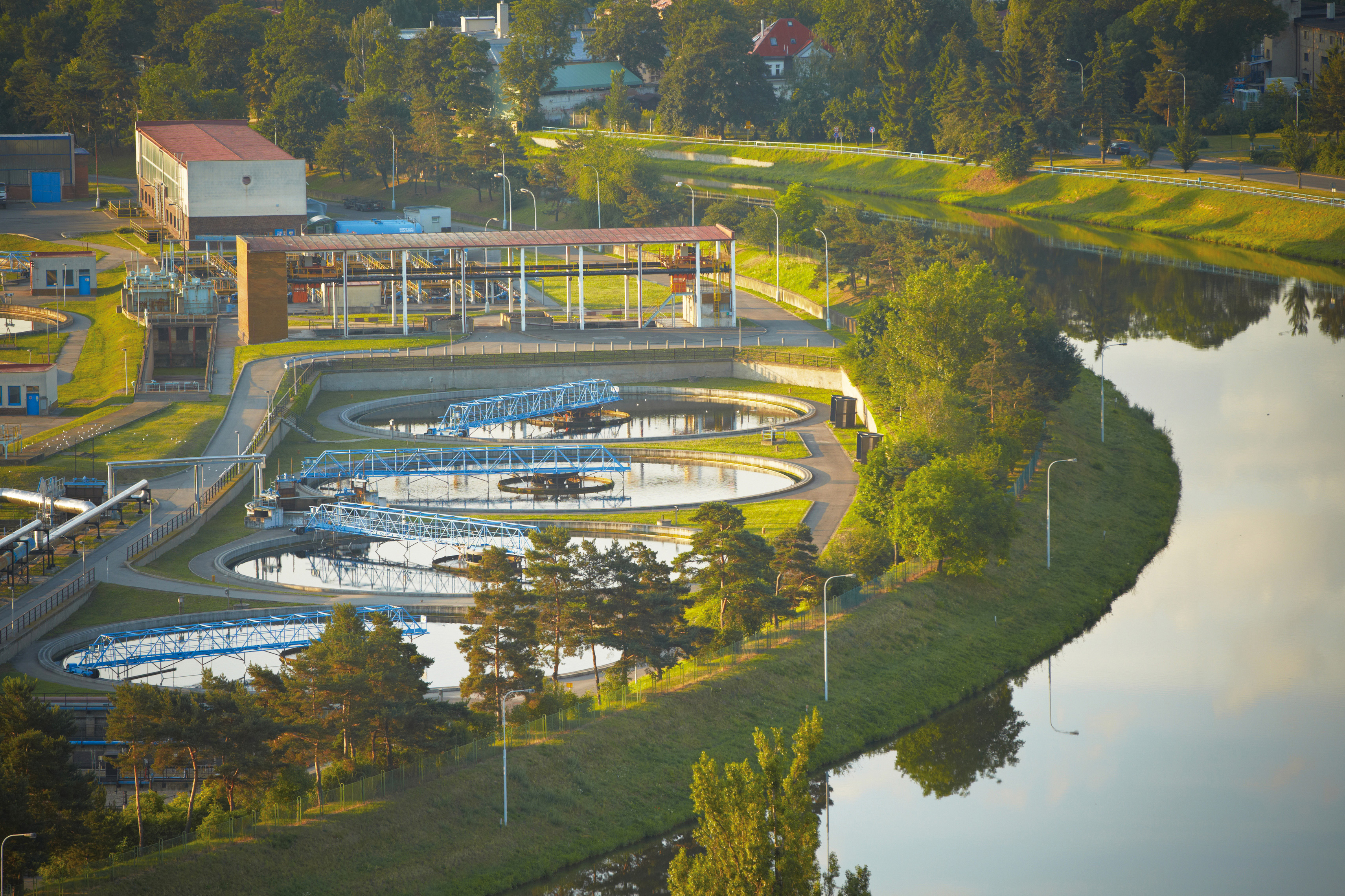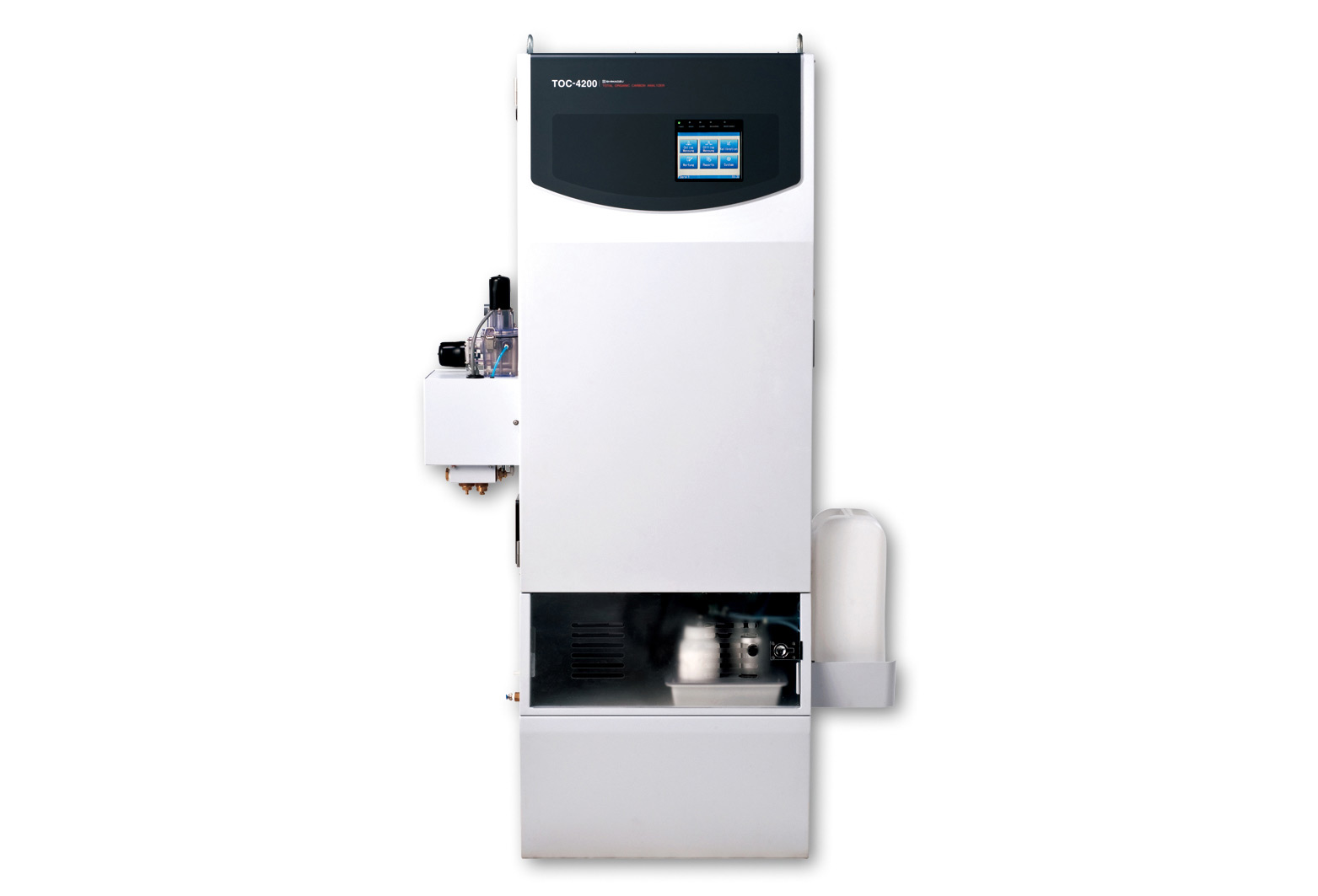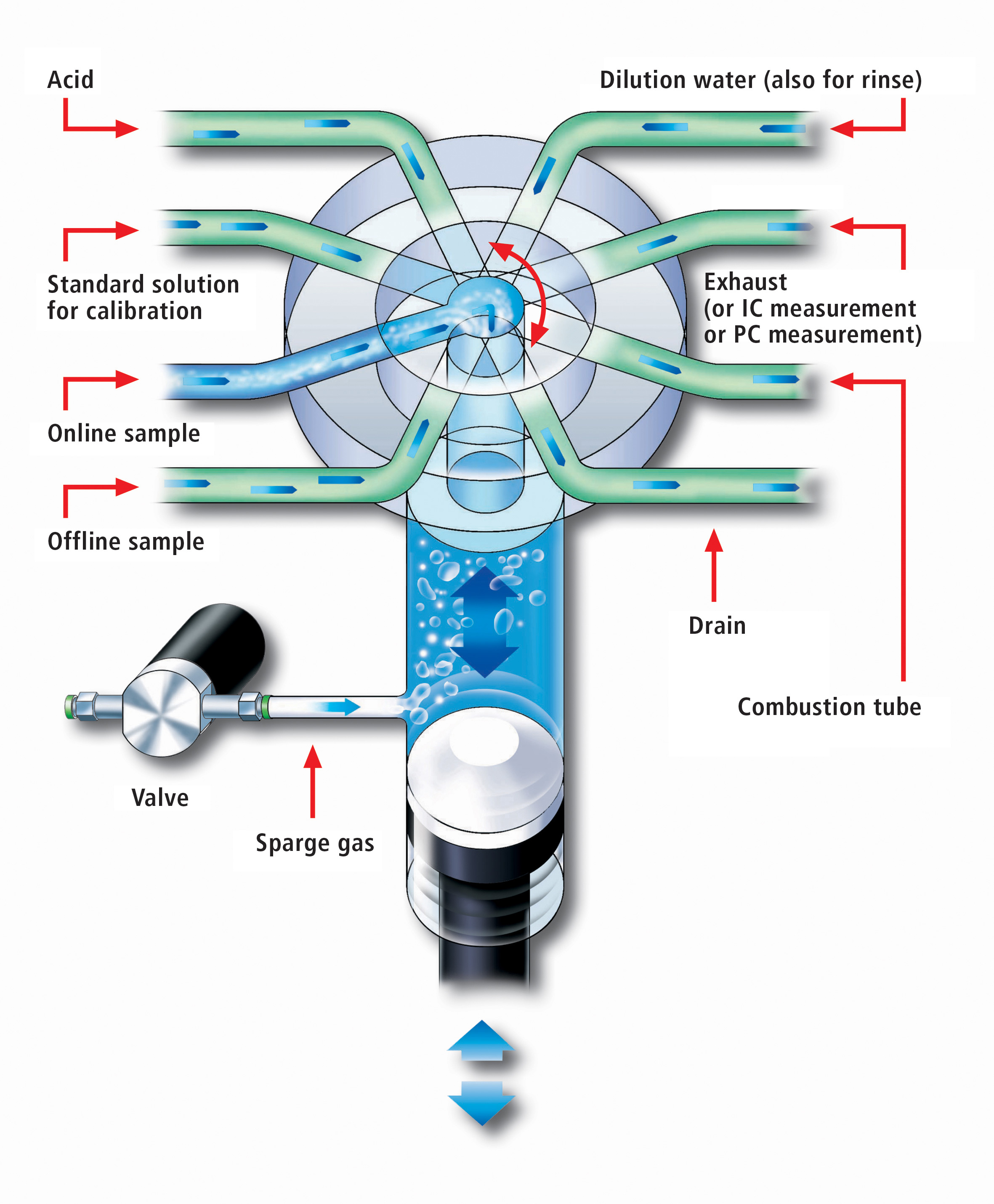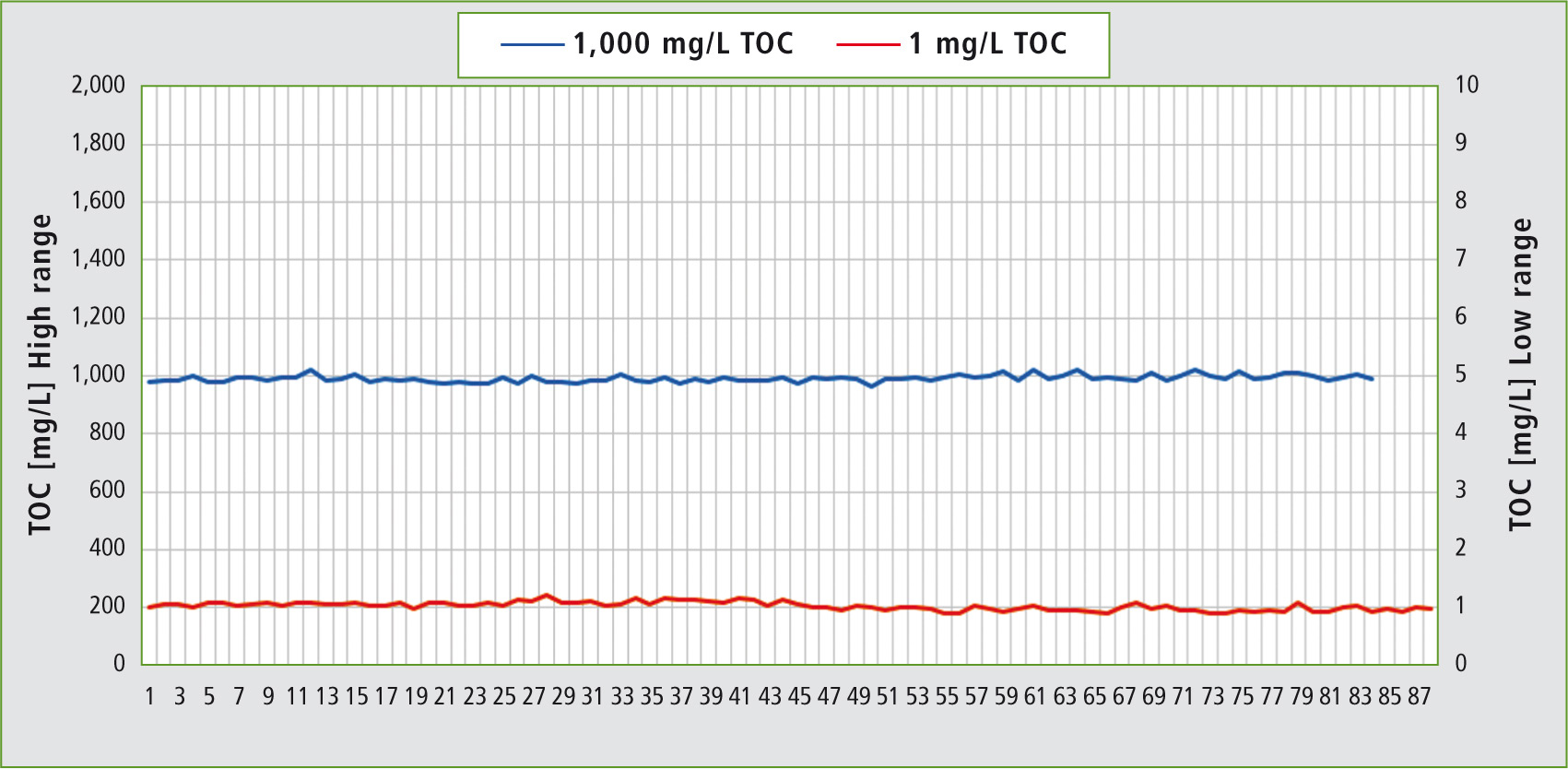No carry-over: TOC determination in process analysis
Wastewater treatment plant: high demands on equipment and sampling method

The TOC (Total Organic Carbon) parameter for organic pollution of wastewater can serve as an indicator for accurate and efficient control of industrial processes. In addition to carrying out TOC analyses in the laboratory, TOC process analysis is increasingly in demand. Using Shimadzu’s TOC-4200 and switching between measuring points, up to six sample streams can be monitored – even in sample streams of different concentration levels.
Practical example: wastewater treatment plant
In industrial water purification and wastewater treatment plants, a variety of processes are used to purify wastewaters in different sub-processes (for instance, biological or filtration processes). The TOC sum parameter provides important information on the remaining organic contamination and thus on the efficiency of the wastewater treatment plant. At the inlet of such plants, TOC concentrations of well over 1,000 mg/L as well as high salt loads can be expected. Dissolved organic substances are decomposed in biological intermediate stages. Flocculation or precipitation agents added at this stage modify the sample composition (matrix).
 TOC-4200
TOC-4200
At the outlet of such purification or wastewater treatment plants, the TOC content of the effluent water is usually less than 50 mg/L. The sample matrices and measuring ranges of these sample streams thus vary widely. Monitoring these sample streams using a single analyzer will place high demands on the instrument and the sampling method used.
ISP module in the TOC-4200
The ISP module (Integrated Sample Pretreatment) is the heart of the TOC-4200 series. It consists of an 8-port valve and a syringe pump (figure 1). The consistent use of inert materials reduces the risk of cross-contamination.
 Figure 1: ISP module of the TOC-4200
Figure 1: ISP module of the TOC-4200
In addition to automated sample pretreatment (acidification and sparging), the module enables dilution of the sample. It is also possible to determine self-cleaning sequences for the module as well as the sample inlets. The automated dilution function serves not only for measuring range extension, but also for matrix reduction. This reduces maintenance and lowers operating costs.
Sampling method
Incorrect measurement values often already occur due to carry-over effects in the sample inlet line or in the sampler. Biological growth and deposits in the sample inlet line constitute a further risk of contamination. To minimize this, the sample should be directed to the sampler at a flow rate of less then 1 m/s. Inspection openings and valves for manual or even automated flushing of the tubing should be provided for. The sampler should be constructed of inert materials.
Automated rinsing steps between individual samplings further reduce time expenditure by the operator. To reduce problems during operation, it is important to pay particular attention to sampling during the project development phase.
Practical test
In a practical test, two sample streams with different matrices and TOC contents were analyzed (table 1). To demonstrate sample carry-over between these sample streams, they were alternately sampled and analyzed 90 times respectively. The results of these alternating measurements are shown in figure 2. From the measurement results for sample stream 1, a mean value of 1,02 ± 0,07 mg/L TOC and for sample stream 2, a mean value of 992,7 ± 13,32 mg/L TOC was obtained.
 Table 1: Matrix and measurement conditions of the two sample streams
Table 1: Matrix and measurement conditions of the two sample streams
 Figure 2: Measurement results of the two sample streams
Figure 2: Measurement results of the two sample streams
Conclusions
Even with significant concentration and matrix differences between both sample streams, the TOC-4200 is operated free from carry-over thanks to its inert construction and automated rinsing function.